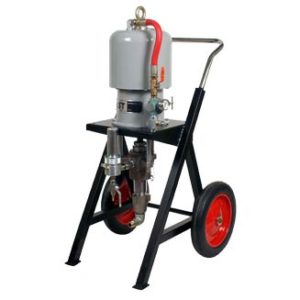
Mastering the Art of Airless Spray Pump Ratios: A Comprehensive Guide
Introduction
In the world of painting, efficiency and precision are paramount, and one tool that plays a crucial role in achieving these goals is the airless spray pump. Among the various factors influencing its performance, the airless spray pump ratio stands out as a key player. In this comprehensive guide, we’ll delve into the intricacies of airless spray pump ratios, exploring the importance, factors influencing them, and tips for optimizing their use.
Understanding Airless Spray Pump Ratios
To comprehend the significance of airless spray pump ratios, it’s essential to grasp their fundamental concept. Simply put, the ratio refers to the proportion of paint to other components, such as thinner or water, in the spray mixture. Achieving the correct ratio is vital for obtaining a smooth finish, preventing clogs, and ensuring the longevity of your spray equipment.
Factors Influencing Airless Spray Pump Ratios
Several factors come into play when determining the ideal airless spray pump ratio for a specific project. These include the type of paint being used, the surface to be painted, and environmental conditions. Different paints may require varying ratios, and understanding these nuances is key to achieving professional results.
Choosing the Right Airless Spray Pump Ratio: Best Practices
Selecting the appropriate ratio involves a combination of experience and knowledge. In this section, we’ll outline best practices for choosing the right airless spray pump ratio for your project. From considering the paint viscosity to adjusting ratios based on temperature and humidity, these tips will empower you to make informed decisions and enhance your painting outcomes.
Optimizing Efficiency with Airless Spray Pump Ratios
Efficiency is the name of the game when it comes to painting projects. We’ll explore how maintaining the correct airless spray pump ratio contributes to overall efficiency, helping you save time, reduce waste, and achieve a professional finish. Tips for troubleshooting common ratio-related issues will also be discussed, providing solutions to challenges that may arise during your projects.
Case Studies: Real-world Applications
To bring the guide full circle, we’ll delve into real-world case studies where the correct airless spray pump ratio made a significant impact on the success of painting projects. These examples will serve as inspiration and practical illustrations of the principles discussed throughout the guide.
Conclusion
In conclusion, mastering the art of airless spray pump ratios is a journey that pays off in dividends for any painting enthusiast or professional. By understanding the importance of ratios, considering influencing factors, and implementing best practices, you can elevate your painting projects to new heights of efficiency and excellence. Whether you’re a seasoned pro or a DIY enthusiast, this comprehensive guide aims to be your go-to resource for achieving outstanding results with airless spray pumps.
- Alifya SEO
- Uncategorized




Most Commented